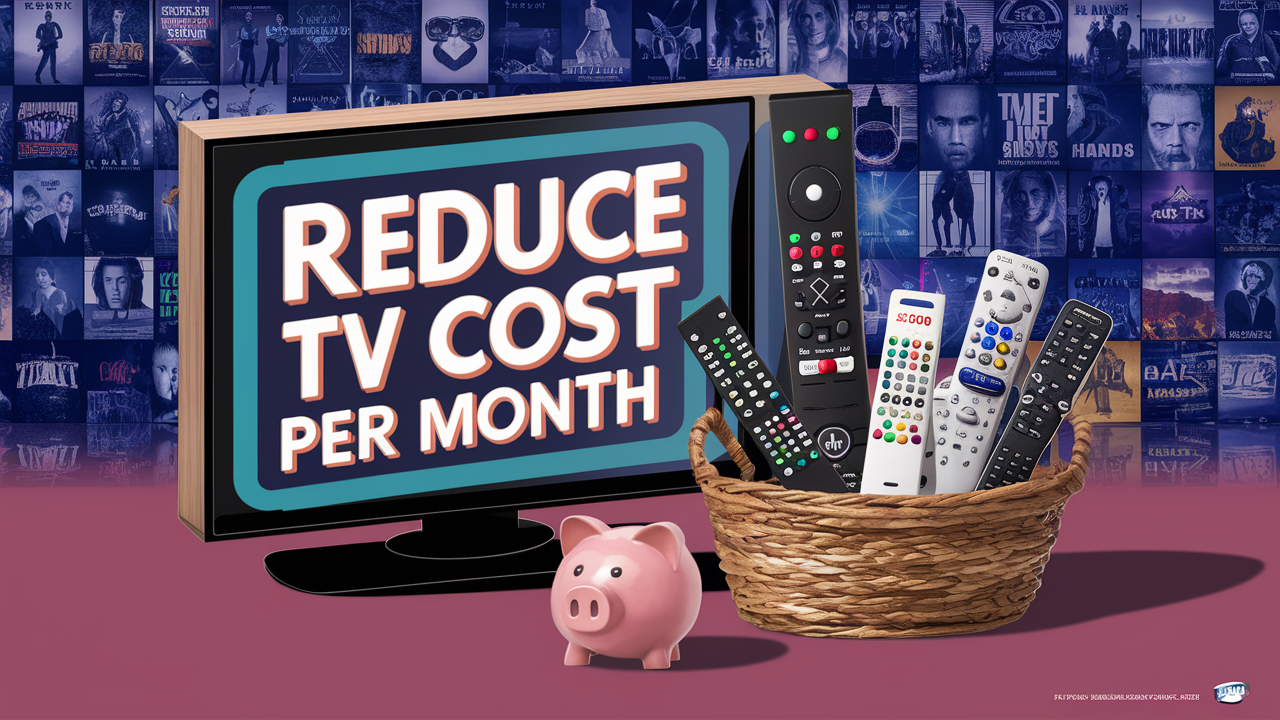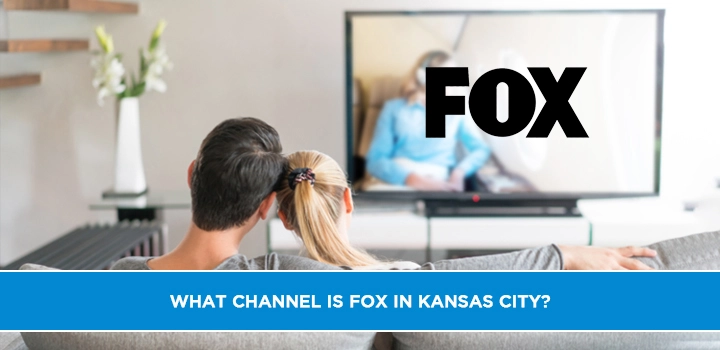How can Seniors Reduce Cable Bills?

Seniors seeking to lower their monthly expenses can significantly reduce their cable bills by exploring alternative entertainment options, negotiating with providers, and leveraging available discounts. This guide offers actionable strategies for seniors to achieve substantial savings without sacrificing their favorite programming.
Understanding Why Cable Bills Are So High
For many seniors, the monthly cable bill represents a significant and often escalating expense. Understanding the underlying reasons for these high costs is the first step toward finding effective solutions. Cable companies operate on complex pricing models that can be opaque and confusing, leading to unexpected increases over time. These costs are driven by several factors, including the rising prices of content licensing, the infrastructure required to deliver services, and the competitive landscape, which often leads to promotional pricing that expires, leaving customers paying standard, higher rates.
The Anatomy of a Cable Bill
A typical cable bill is not just for the channels you watch. It’s a composite of various charges:
- Base Package Fees: The core cost for a selection of channels.
- Premium Channel Add-ons: Costs for HBO, Showtime, Cinemax, etc.
- Sports Packages: Additional fees for dedicated sports channels.
- Equipment Rentals: Monthly charges for cable boxes, DVRs, and modems.
- Taxes and Fees: A significant portion, often including regulatory fees, franchise fees, and broadcast TV surcharges. These are often non-negotiable and can add up substantially.
- Promotional Rate Expiration: Introductory offers are common, but once they expire, rates often jump considerably.
Common Reasons for Escalating Costs
Several factors contribute to the persistent increase in cable bills:
- Content Rights: Networks and content creators continuously negotiate and raise the prices for their programming, and these costs are passed on to consumers.
- Technological Advancements: The demand for higher definition, more channels, and advanced features like DVRs adds to the overall cost of service delivery.
- Lack of Competition: In many areas, seniors may have limited choices for cable providers, allowing existing companies to maintain higher prices.
- Bundling Strategies: While bundles can sometimes offer savings, they often include services like home phone or internet that may not be fully utilized, leading to paying for unused features.
2025 Statistics on Cable Costs
Current data from 2025 indicates that the average monthly cost for cable TV in the United States hovers around $115-$130. However, for seniors who may have bundled services or opted for premium channels, this figure can easily exceed $150-$200 per month. These rising costs are a primary concern for fixed-income households, making cost-reduction strategies essential.
Mastering Negotiation: Talking to Your Cable Provider
Many seniors may feel intimidated by the prospect of negotiating with their cable provider, but it's one of the most effective ways to reduce bills. Cable companies, like most service providers, are keen on retaining existing customers, especially loyal ones. Understanding your leverage and approaching the conversation strategically can lead to significant savings. The key is to be informed, polite, and firm.
When to Negotiate
The best times to negotiate are:
- When your promotional period is ending: This is the most opportune moment, as the provider knows you're likely to face a price hike.
- When you receive a bill increase notification: Call immediately to discuss the increase.
- When you're considering switching providers: Mentioning competitor offers can be a powerful negotiation tool.
- Annually: Even if your bill hasn't increased, a proactive annual call can sometimes yield discounts.
Preparation is Key
Before you pick up the phone:
- Review your current bill: Understand exactly what you're paying for, including all fees and add-ons.
- Identify your needs: What channels or services do you absolutely need? What can you live without?
- Research competitor offers: Know what other providers in your area are offering for similar packages. Websites like FCC.gov can provide general market information, and local provider websites offer specific deals.
- Note down your loyalty: If you've been a customer for many years, mention this.
The Negotiation Conversation: Step-by-Step
- Call customer service: Start by calling the general customer service number.
- State your purpose clearly: "I'm calling to discuss my upcoming bill increase/my current bill and explore options to lower my monthly cost."
- Mention your loyalty: "I've been a loyal customer for X years, and I'm concerned about the rising cost of my service."
- Express your intent to switch (if applicable): "I've been looking at offers from [Competitor Name], and they are offering [specific deal]."
- Ask for retention offers: "Are there any current promotions or discounts available for long-term customers like myself?" or "Can you offer me a better rate to match or beat competitor pricing?"
- Be specific about what you want: "I'm looking to reduce my bill by $X per month, or to get my bill back down to the promotional rate I was paying."
- Don't be afraid to ask for a supervisor: If the initial representative cannot help, politely ask to speak with a supervisor or a member of the retention department.
- Be prepared to compromise: You might not get everything you want, but aim for a significant reduction.
- Confirm everything in writing: Once an agreement is reached, ask for confirmation of the new rate and terms via email or mail.
Example Negotiation Script Snippet
You: "Hello, I'm calling about my bill. I've been a customer for 15 years, and my bill has gone up significantly since my promotion ended. I'm looking at competitors who are offering similar packages for much less. Can you tell me what options are available to lower my monthly cost?"
Representative: "Let me look at your account. I see your promotion ended..."
You: "Yes, and the new rate is quite high. I'm hoping you can offer me a retention discount or a new promotional rate to keep my business. I'm particularly interested in keeping channels like [mention a few key channels]."
Common Negotiation Pitfalls to Avoid
- Being aggressive or rude: This is counterproductive.
- Not being prepared: Not knowing your bill or competitor offers weakens your position.
- Accepting the first offer: Always ask if there's anything better.
- Not understanding the terms: Ensure you know the duration of any new promotion and what the rate will be afterward.
Exploring Affordable Alternatives to Traditional Cable
The landscape of home entertainment has dramatically shifted, offering seniors a wealth of affordable alternatives to expensive traditional cable packages. These options often provide more flexibility, customization, and significant cost savings. From streaming services to over-the-air (OTA) broadcasts, there are solutions to fit nearly every viewing preference and budget.
Over-the-Air (OTA) Television
This is often the most overlooked but incredibly cost-effective option. OTA television allows you to receive local broadcast channels (like ABC, CBS, NBC, FOX, PBS) for free using an antenna. The quality is often superior to cable in terms of picture resolution (HD).
- How it works: Broadcast signals are transmitted over the air. A digital antenna picks up these signals.
- Equipment needed: A digital TV antenna. Prices range from $20 for basic indoor antennas to $100+ for more powerful outdoor antennas.
- What you get: All major local network affiliates, plus many smaller digital channels that broadcast specialized content (e.g., classic movies, news, educational programming).
- Pros: Free after initial equipment purchase, no monthly fees, excellent HD quality, access to local news and emergency broadcasts.
- Cons: Limited to local channels, reception can vary based on location and obstructions.
- Recommendation for Seniors: A simple indoor amplified antenna is often sufficient for urban and suburban areas. For those in rural areas, a higher-gain outdoor antenna might be necessary. Websites like FCC's DTV Reception Maps can help determine channel availability.
Streaming Services (OTT - Over-the-Top)
Streaming services offer a vast library of on-demand content and live TV options, often at a fraction of the cost of cable. They are accessible via smart TVs, streaming devices (Roku, Fire TV, Apple TV), computers, and smartphones.
On-Demand Streaming Services
These services provide libraries of movies, TV shows, and original content that you can watch anytime.
- Netflix: Popular for its extensive library of movies, TV shows, and original series. Basic plans start around $6.99/month (2025 pricing).
- Hulu: Offers a mix of current TV shows, movies, and original content. Plans start around $7.99/month for the ad-supported version.
- Amazon Prime Video: Included with an Amazon Prime membership (around $14.99/month or $139/year), offering a large selection of movies and TV shows.
- Disney+: Great for families and fans of Disney, Pixar, Marvel, Star Wars, and National Geographic. Around $7.99/month.
- Max (formerly HBO Max): For premium content from HBO, Warner Bros., DC, and more. Plans start around $9.99/month.
- Peacock: NBCUniversal's streaming service with free and paid tiers, offering live sports, movies, and TV shows. Free tier available; paid plans start around $5.99/month.
Live TV Streaming Services
These services mimic traditional cable by offering live channels, often including local networks, sports, and news.
- YouTube TV: Offers a comprehensive package of over 100 channels, including local networks, for around $72.99/month. Excellent for replacing a full cable bundle.
- Hulu + Live TV: Combines Hulu's on-demand library with live TV channels. Around $76.99/month.
- Sling TV: A more customizable option. Offers two base packages, "Orange" and "Blue," for $40/month each, which can be combined for $55/month. Allows users to pick and choose channel add-ons.
- DirecTV Stream: Offers various packages, some including local channels, starting around $79.99/month.
Pros and Cons of Streaming
- Pros: Much lower cost than cable, flexibility to choose services, no long-term contracts, access to a vast amount of content, easy to cancel or switch services.
- Cons: Requires reliable internet, can still add up if subscribing to many services, live TV streaming can sometimes have buffering issues, some niche channels may not be available.
Smart TV and Streaming Device Options
To access streaming services, seniors will need a compatible device:
- Smart TVs: Many modern televisions come with built-in streaming apps.
- Streaming Sticks/Boxes: Devices like Amazon Fire TV Stick ($30-$50), Roku Streaming Stick ($30-$60), or Apple TV ($130+) are affordable and easy to use. They plug into your TV's HDMI port.
Comparing Streaming to Cable: A 2025 Snapshot
A senior who currently pays $150/month for cable could potentially switch to:
- OTA antenna (initial cost ~$50) for local channels.
- Netflix ($6.99/month) for general entertainment.
- Hulu ($7.99/month) for current shows.
- YouTube TV ($72.99/month) for live news and sports.
This combination would cost approximately $87.97 per month, a saving of over $60 per month, or more than $720 per year. For those who don't need live TV, the savings are even more dramatic.
Leveraging Bundles, Discounts, and Promotions
Beyond negotiation and switching services, seniors can further reduce their cable bills by strategically utilizing bundle deals, actively seeking out discounts, and staying informed about limited-time promotions. These methods can either lower the cost of existing services or provide added value without increasing the price.
Understanding Bundle Deals
Cable providers often offer bundles that combine internet, TV, and sometimes home phone services. While these can sometimes be more expensive than individual services if you don't use everything, they can also offer savings compared to purchasing each service separately from different providers.
- Pros of Bundling:
- Potential for overall cost savings.
- Simplified billing with one provider.
- Often includes faster internet speeds or premium channel access as part of the deal.
- Cons of Bundling:
- You might pay for services you don't need (e.g., a landline).
- The "discount" might only apply to the introductory period.
- Bundles can sometimes be more expensive than picking and choosing the best deals from different providers.
- Strategy for Seniors:
- Assess your actual needs. Do you use your landline? How much internet speed do you require?
- Compare the bundled price against the cost of individual services (including streaming options).
- Always ask if you can opt out of certain parts of the bundle to reduce the price.
Senior-Specific Discounts
While not as common as general promotions, some cable and internet providers offer specific discounts for seniors or low-income individuals. These are often tied to government assistance programs or simply a recognition of the fixed incomes many seniors live on.
- How to find them:
- Directly ask your current provider if any senior discounts are available.
- Check the provider's website for "discounts," "promotions," or "assistance programs."
- Inquire about government-backed programs like the Lifeline program, which can offer discounts on phone and internet services, and sometimes bundled TV packages.
- Eligibility: These discounts often require proof of age or income verification.
Promotional Offers and Limited-Time Deals
Cable companies frequently run promotions to attract new customers or retain existing ones. These can include:
- Introductory Pricing: Lower rates for the first 6-12 months.
- Free Equipment Upgrades: Waived fees for DVRs or premium boxes.
- Bundled Add-ons: Free premium channels or sports packages for a limited time.
- Contract Buyouts: Some providers will pay early termination fees if you switch from another company.
Strategy for Seniors:
- Stay informed: Regularly check provider websites, flyers, and advertisements.
- Be proactive: Call your provider when your current promotion is about to expire to see if you can renew it or get a new one.
- Read the fine print: Understand the duration of the promotion and the price afterward.
The Impact of Bundling and Discounts (2025 Example)
Consider a senior who needs internet and TV. Instead of paying $70 for internet and $120 for a cable TV package, they might find a bundle for $150 that includes faster internet and a few premium channels they enjoy. If they also qualify for a senior discount of 10% on the internet portion ($7 discount), their total bill could be $143, saving them $47 per month compared to separate services without discounts.
Comparison of Bundling Strategies
| Strategy | Potential Savings | Considerations |
|---|---|---|
| Negotiating Existing Package | Moderate to High (e.g., $20-$50/month) | Requires active engagement, relies on provider's willingness. |
| Switching to Streaming + OTA | Very High (e.g., $50-$100+/month) | Requires reliable internet, learning curve for new tech. |
| Optimizing Bundles | Moderate (e.g., $10-$30/month) | Requires careful assessment of needs, potential for paying for unused services. |
| Leveraging Discounts | Low to Moderate (e.g., $5-$20/month) | Eligibility varies, often requires specific programs. |
Note: Savings are estimates and vary based on location, provider, and individual usage.
Smart Subscription Management for Long-Term Savings
Even with the best negotiation and alternative choices, managing multiple subscriptions can lead to accumulating costs. Implementing smart subscription management practices is crucial for seniors to maintain long-term savings and avoid "subscription creep," where small monthly charges collectively become a significant expense.
Auditing Your Current Subscriptions
The first step is to understand exactly what you're paying for. This includes not just cable but also streaming services, premium channels, and any other recurring entertainment or utility fees.
- Gather your statements: Collect bank statements, credit card statements, and cable bills from the past few months.
- List all recurring charges: Note down the service name, the monthly cost, and the payment date.
- Categorize: Separate essential services from non-essential ones.
The "Use It or Lose It" Principle
Be honest about which services you truly use and enjoy. If you signed up for a streaming service to watch one specific show and haven't used it since, it's time to cancel.
- Track usage: For streaming services, note down how often you access them.
- Set reminders: If you plan to use a service only for a limited time (e.g., a sports season), set a calendar reminder to cancel before the next billing cycle.
- Family input: If multiple people in the household use the services, discuss which ones are most valued.
Canceling Unnecessary Services: A Step-by-Step Guide
- Identify the service to cancel.
- Visit the provider's website or app: Look for "Account Settings," "Subscription Management," or "Billing."
- Find the cancellation option: This is sometimes hidden, so be persistent.
- Follow the prompts: You may need to confirm your decision multiple times.
- Look for confirmation: Ensure you receive an email or on-screen confirmation of your cancellation.
- Check your next bill: Verify that the charge has been removed.
- If direct cancellation isn't available: Contact customer service via phone or chat. Be prepared to state your reason for canceling (e.g., cost, lack of use).
Sharing and Family Plans
Many streaming services offer family plans or allow multiple user profiles. This can be a cost-effective way to share access.
- Streaming Service Sharing: Services like Netflix, Hulu, and Disney+ allow sharing accounts across multiple devices and users within a household. Some even offer plans that permit sharing with individuals outside the household (though terms are evolving).
- Bundled Internet/TV: If you have a bundled package, ensure all included channels or features are being utilized by the household.
The Power of Pausing or Downgrading
Some services allow you to pause your subscription for a period or downgrade to a cheaper tier with fewer features. This can be useful during times when you might not be using the service as much.
- Example: If you're going on an extended vacation, pausing a streaming service can save you money for that month.
- Downgrading: If a premium channel is no longer a priority, downgrade to a basic package to save money.
2025 Subscription Trends Affecting Seniors
The subscription economy continues to grow, with more niche services emerging. In 2025, seniors are advised to be particularly mindful of "subscription fatigue." While streaming services offer value, subscribing to five or more distinct services can easily cost $50-$100+ per month. A careful audit and prioritization are more important than ever. For instance, consolidating live TV needs into one service like YouTube TV or Hulu + Live TV, and then supplementing with 1-2 on-demand services for specific content, is often more economical than subscribing to many individual services.
Additional Strategies for Maximum Savings
Beyond the core strategies of negotiation, exploring alternatives, and managing subscriptions, several other practical tips can help seniors further reduce their cable bills and overall entertainment expenses. These often involve small behavioral changes or leveraging overlooked resources.
Utilizing Public Libraries and Community Resources
Public libraries are invaluable resources that extend beyond books. Many libraries offer:
- Free Wi-Fi: Reduces reliance on expensive home internet packages for browsing and streaming.
- Public Computers: For accessing online content or managing accounts.
- DVD and Blu-ray Collections: A vast, free library of movies and TV shows that can supplement or replace some streaming needs.
- Streaming Service Access: Some libraries offer access to specific streaming platforms (like Kanopy or Hoopla) for patrons.
Community centers may also offer discounted internet access or shared entertainment resources.
Leveraging Free Content and Public Domain Resources
The internet is a treasure trove of free, high-quality content.
- YouTube: Offers countless free documentaries, classic films, educational content, and channels dedicated to specific interests.
- Archive.org: A digital library that provides free access to millions of books, movies, music, and archived websites.
- PBS.org: Many PBS shows are available for free streaming on their website, often for an extended period.
- Local News Websites and Apps: Access local news and community information without needing a cable subscription.
Considering Internet-Only Plans
If cable TV is no longer a priority, seniors can often save money by switching to an internet-only plan. This requires a reliable internet connection to stream content, but the combined cost of internet and streaming services is typically much lower than a traditional cable package.
- Assess your internet needs: Determine the speed required for your streaming habits.
- Negotiate with ISPs: Treat your internet provider with the same negotiation tactics used for cable.
- Look for bundles: Sometimes internet providers offer deals on streaming devices or services.
Bundling Internet with Mobile Phone Plans
Many mobile carriers now offer bundles that include home internet service, often at a discounted rate. If you are already with a mobile provider, check if they have an attractive internet-only or internet-and-mobile bundle.
The Role of Technology and Simplicity
Sometimes, the most cost-effective approach is to simplify technology. Instead of multiple streaming devices and complex setups, a single smart TV or a simple streaming stick can suffice.
- Focus on ease of use: Choose devices and services that are intuitive and easy for seniors to navigate.
- Avoid unnecessary upgrades: A basic streaming device is often all that's needed.
2025 Outlook: The Continued Rise of A La Carte Entertainment
The trend in 2025 continues to favor an "a la carte" approach to entertainment. Seniors are increasingly empowered to pick and choose exactly what they want to pay for. The combination of free OTA channels, a few carefully selected streaming services, and perhaps a subscription to a live TV streaming service if needed, offers unparalleled flexibility and cost control. The key is to regularly re-evaluate your subscriptions and needs, as the market is constantly evolving with new offerings and pricing structures.
Example: A senior who loves nature documentaries could subscribe to CuriosityStream ($9.99/month) and have free access to local channels via OTA. If they also enjoy classic movies, they might add a service like Tubi (free with ads) or a curated selection on Amazon Prime Video. This approach keeps monthly costs below $20, a stark contrast to traditional cable.
Conclusion
Reducing cable bills is an achievable goal for seniors, offering significant financial relief and greater control over entertainment spending. By understanding the components of their current bills, actively engaging in negotiation with providers, and strategically adopting affordable alternatives like over-the-air television and curated streaming services, seniors can reclaim a substantial portion of their monthly budget. Remember to continuously audit your subscriptions, leverage available discounts, and embrace the flexibility of modern entertainment options. The transition to a more cost-effective entertainment model is not only possible but also offers a richer, more personalized viewing experience tailored to individual preferences and financial realities.





